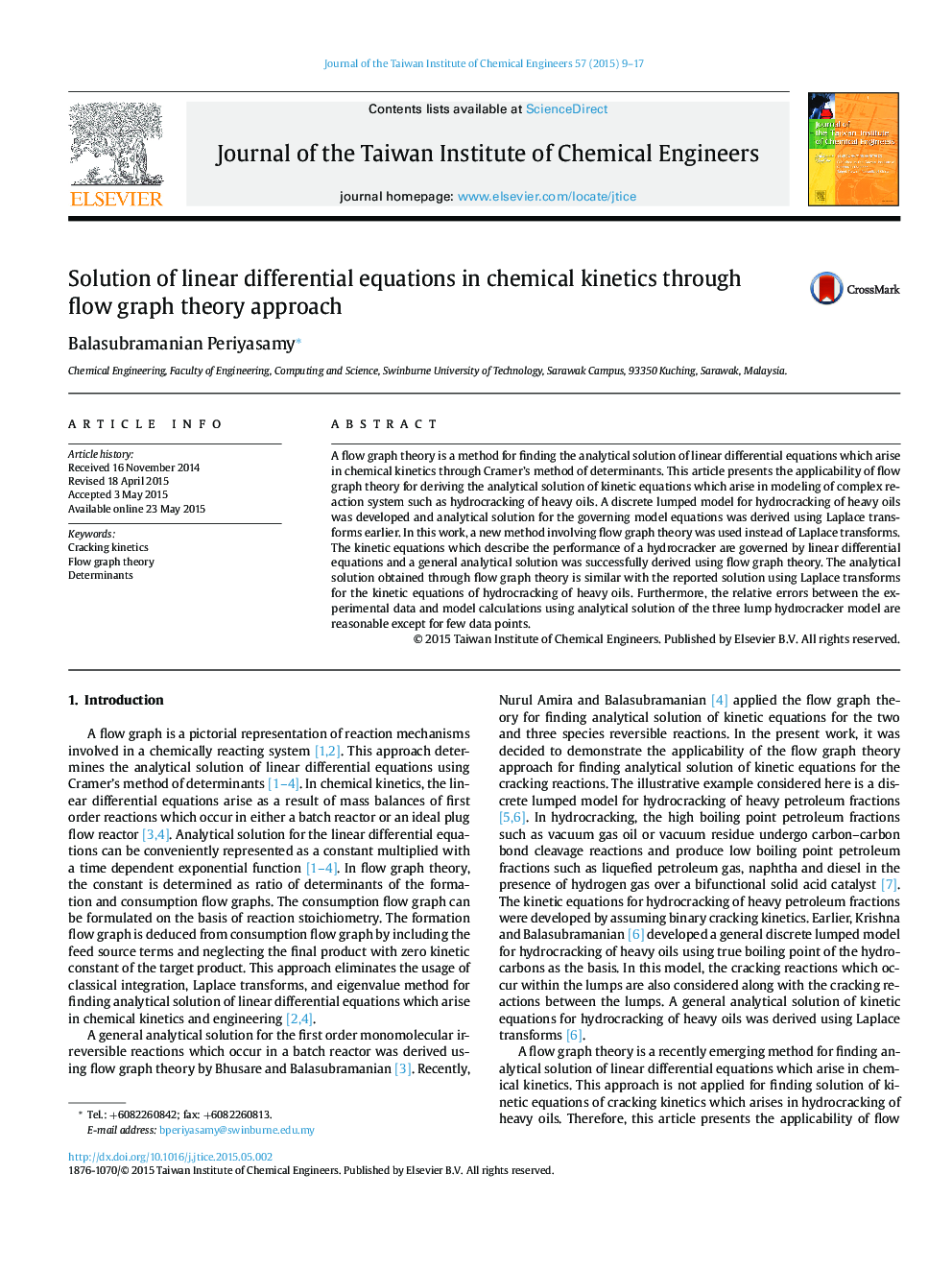| Article ID | Journal | Published Year | Pages | File Type |
|---|---|---|---|---|
| 690791 | Journal of the Taiwan Institute of Chemical Engineers | 2015 | 9 Pages |
•A flow graph theory was applied for determining the analytical solution of kinetic equations for hydrocracking of heavy oils.•The consumption flow graph was constructed on the basis of reaction stoichiometry.•A formula for finding consumption determinant was derived on the basis of consumption flow graph.•The formation determinant of each lump was deduced from the consumption determinant.•The analytical solution obtained for the hydrocracker model through flow graph theory is similar with the reported solution using Laplace transforms.
A flow graph theory is a method for finding the analytical solution of linear differential equations which arise in chemical kinetics through Cramer's method of determinants. This article presents the applicability of flow graph theory for deriving the analytical solution of kinetic equations which arise in modeling of complex reaction system such as hydrocracking of heavy oils. A discrete lumped model for hydrocracking of heavy oils was developed and analytical solution for the governing model equations was derived using Laplace transforms earlier. In this work, a new method involving flow graph theory was used instead of Laplace transforms. The kinetic equations which describe the performance of a hydrocracker are governed by linear differential equations and a general analytical solution was successfully derived using flow graph theory. The analytical solution obtained through flow graph theory is similar with the reported solution using Laplace transforms for the kinetic equations of hydrocracking of heavy oils. Furthermore, the relative errors between the experimental data and model calculations using analytical solution of the three lump hydrocracker model are reasonable except for few data points.
Graphical abstractFigure optionsDownload full-size imageDownload as PowerPoint slide
